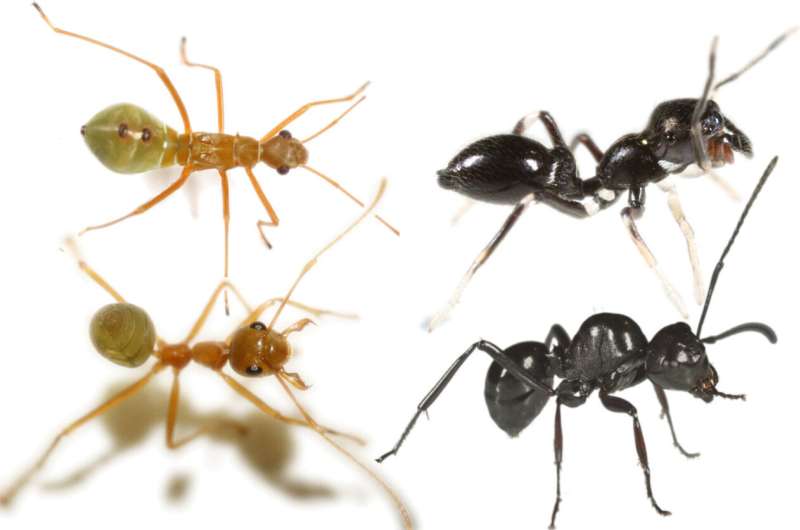February 14, 2024 report
This article has been reviewed according to Science X's editorial process and policies. Editors have highlighted the following attributes while ensuring the content's credibility:
fact-checked
peer-reviewed publication
trusted source
proofread
Imperfect mimicry in spiders and insects mainly shaped by adaptive processes rather than constraints, finds study

Two natural scientists at Macquarie University, working with an evolutionary specialist at the University of New South Wales, all in Australia, have found that imperfect mimicry in spiders and insects is likely mainly shaped by adaptive processes rather than constraints, or chance.
In their study, published in the journal Biology Letters, Donald McLean, Gerasimos Cassis and Marie Herberstein collected multiple specimens of ant-mimicking spiders and insects and compared them to learn more about any constraints that may have led to their imperfect mimicry.
Prior research has shown that many insect species have evolved to resemble ants. This, scientists suggest, is because ants are less likely to be eaten by predators due to their foul taste and the tendency of ants to retaliate as a group. Research has also shown that some spiders have evolved in similar ways for similar reasons.
But researchers have assumed until now that insects would do a better job of it than spiders because they are evolutionarily closer to the ant model. In this new effort, the research team has found that not to be the case.
Evolution is driven by successful reproduction efforts by individuals with advantageous traits over others of their kind. Such traits are then passed on to their offspring, leading to changes over time. But some research has shown that such changes can be prevented from happening by constraints that are too large to overcome—the body weight of humans, for example, would make it impossible to develop wings for flight, even if it might allow people to gain food or to reproduce more easily.
Such constraints are believed to affect spiders. To find out if that is the case, the research team studied prior work and then ventured out into the field to find and collect spiders and insects that resemble ants.
The researchers found that the ant-mimicking spiders looked just as much like ants as ant-mimicking insects, suggesting that major constraints may not always prevent creatures from evolving dramatically. They did find one interesting difference, however. The spiders tended to be worse mimics when viewed laterally—they have longer bodies and tails. The researchers suggest this is because their predators came from the air, rather than the ground, and so lateral mimicry was not as relevant.
More information: Donald James McLean et al, Morphological ant mimics: constrained to imperfection?, Biology Letters (2024). DOI: 10.1098/rsbl.2023.0330
Journal information: Biology Letters
© 2024 Science X Network





















